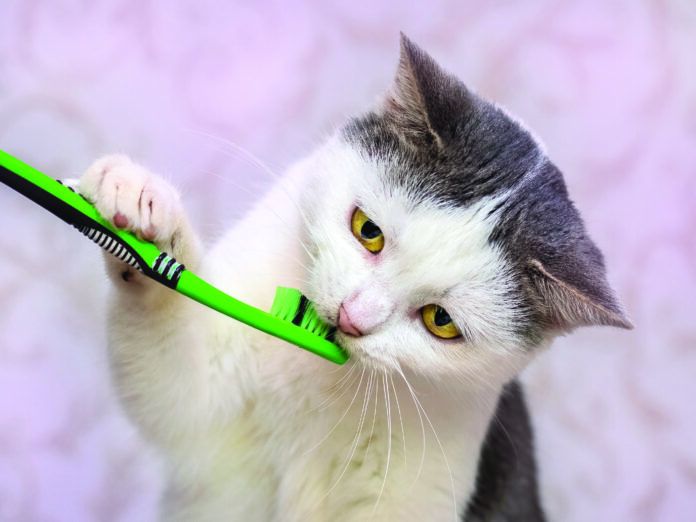A frequently painful condition in cats called tooth resorption has become much more common over the last 50 years, affecting anywhere from 20 to 60 percent of pet cats. At least one study suggests that its increasing prevalence cannot be attributed solely to increased awareness of the problem and the improved ability to diagnose it. Something in the environment of house cats appears to be contributing to the surge in cases. Indeed, feral cats experience tooth resorption at a much lower rate than domestic felines. Preliminary research suggests the culprit may be too much vitamin D in house cats’ diets.
The blood concentration of vitamin D has been found to be significantly higher in cats with tooth resorption than in felines with no evidence of the problem. To be sure, that’s just an association between higher levels of vitamin D and tooth resorption, not anything like proof of cause and effect. But it’s a research path that some believe begs exploration, especially considering that experimental over-supplementation of vitamin D in dogs has shown marked changes in aspects of oral health that parallel the changes seen in cats with tooth resorption.
Just what is tooth resorption?
Sometimes erroneously called cat cavities (cats don’t actually get cavities), tooth resorption is a phenomenon whereby a cat’s body starts to eat away at one or more of his teeth. The tooth literally erodes.
The condition appears to be much more prevalent in older cats. In one study, tooth resorption was found to be almost seven times as common in cats 10 to 15 years old as in those from kittenhood to four years of age. If a cat does have one or more teeth that resorb when he is young, it becomes more likely that he will lose many or all of his teeth by the time he is 10 or 11.
That in itself is not a problem. Cats don’t need their teeth to eat. They’re not big chewers and in fact often do not have to switch from dry kibble to wet food if they have lost all their teeth.
The trouble comes in the process of the resorption itself. A tooth’s enamel covers its dentin, which contains tiny tubules, or channels, that are almost the equivalent of nerves. That’s where all the sensitivity to heat, cold, and pressure is. Once the dentin is exposed as the enamel wears away, the tooth becomes much more sensitive. When it’s all over, the tooth crumbles and breaks off, and the gum heals over it. Problem solved. But waiting for a tooth to fully resorb can leave a cat in pain for quite a while. The entire process can take from weeks to months.
The resorption starts right at the gum line, where the white enamel hits the pink gum. What begins as a little indentation keeps getting bigger and deeper, with the hidden part of the tooth underneath the gum line resorbing at the same rate as what’s visible.
Fortunately, it’s not necessary to make a cat wait it out. The best way to handle a resorbing tooth is to extract it as soon as it’s noticed. Tooth extraction is not cheap, but your cat will be comfortable again within a day or two, once the postoperative discomfort dissipates and he gets over having been taken to the doctor. He’ll also be friendlier and have a better appetite and will be more likely to groom himself as enthusiastically as he did before. He’ll also become more active, too.
Potential signs of a resorbing tooth include difficulty eating, not wanting to eat, drooling, and a kind of spasming or trembling of the jaw, often while trying to take in food. Any of those should prompt a visit to the vet for a clinical exam and, potentially, x-rays.
Will less vitamin D decrease the chance for food resorption?
At this point, it’s much too early for anyone to consider trying to find a diet for their cat that is low in vitamin D for the purpose of staving off tooth resorption. The resorption-vitamin connection is only in the realm of hypothesis at this point. There may be other environmental factors that prove to be the triggers, if in fact it is something about a cat’s environment that’s contributing to the problem.
At this point, the best thing a loving cat owner can do if they sense their pet has mouth pain — for whatever reason — is to take him to the vet for a diagnosis and possible treatment. The animal doesn’t have to suffer. Veterinary dental medicine has an amazing capacity to make a cat comfort-
able again.




